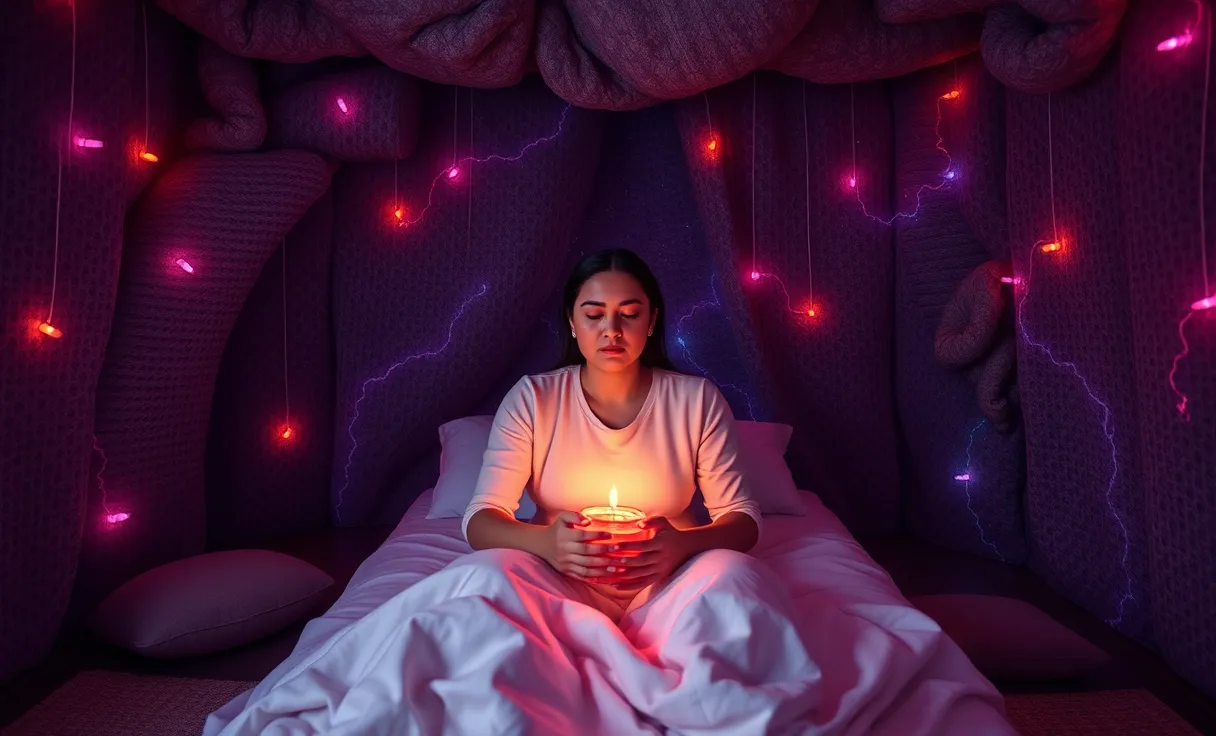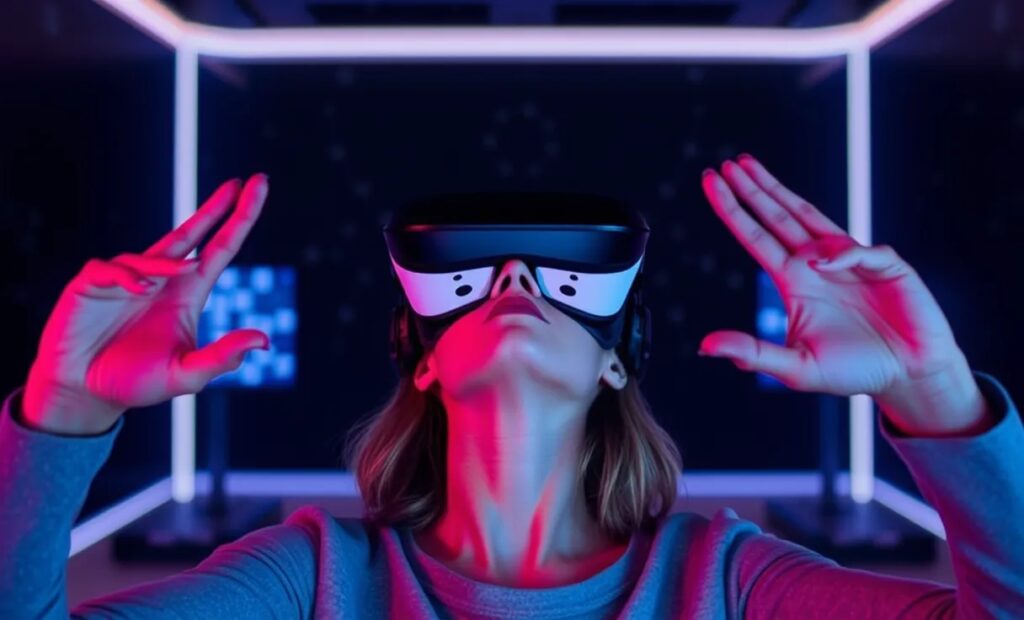
The Role of AI in Modern CBT
How AI Enhances Traditional Therapy
AI isn’t here to replace therapists but to make their work smarter and more effective.
AI-driven assessments use algorithms to analyze patterns in patient behavior, speech, and responses. This data pinpoints triggers and behavioral patterns faster than traditional assessments.
For example, AI tools like Woebot can recognize early signs of anxiety and suggest interventions.
Personalized treatment plans are another game-changer. Instead of generic approaches, AI tailors plans to individual needs, considering real-time progress and patient feedback.
Virtual Therapists and Chatbots
Ever wished therapy could fit your schedule? Virtual therapists powered by AI provide 24/7 access.
These chatbots are equipped with advanced natural language processing (NLP) to engage users in meaningful dialogue. Tools like Replika and Woebot offer CBT-based guidance in moments of stress or anxiety.
This instant access doesn’t just save time—it breaks down barriers like stigma and cost. With AI chatbots, therapy is now more inclusive.
Tracking Progress with AI Tools
Keeping track of mental health progress can feel overwhelming. This is where AI tools shine. They monitor physiological changes, analyze mood patterns, and record session details to provide real-time feedback.
Some platforms even integrate wearables to track heart rate and breathing, correlating this data with anxiety episodes.
These tools not only help patients see their improvements but also assist therapists in fine-tuning treatment. It’s a win-win.
Virtual Reality in CBT

Immersive Exposure Therapy
For individuals with anxiety, facing fears in real life can feel overwhelming—or even impossible. This is where Virtual Reality (VR) steps in.
VR allows therapists to create safe, controlled environments where patients can confront anxiety-provoking situations. Whether it’s simulating a crowded public space or a high-altitude bridge, VR tailors exposure therapy to the patient’s needs.
The best part? These environments are adjustable. Therapists can increase or reduce the intensity to match the patient’s comfort level, making the process gradual and less intimidating.
Building Coping Skills in VR Environments
VR isn’t just for exposure—it’s a training ground for coping strategies. Patients can practice mindfulness, breathing techniques, or grounding exercises in real-world-like scenarios.
For instance, someone with social anxiety can rehearse conversations in virtual settings before attempting them in reality. It’s like a practice field for mental resilience.
What makes VR unique is the opportunity for repetition without real-world consequences. This helps build confidence and mastery in managing anxiety.
Evidence Supporting VR for Anxiety Disorders
The science backing VR in anxiety therapy is compelling. Clinical trials have shown remarkable success rates, particularly in treating specific phobias.
For example, a study published in the Journal of Anxiety Disorders demonstrated that VR-based exposure therapy was as effective as in-person methods—if not more. Patients reported feeling less overwhelmed and more in control during VR sessions.
Moreover, VR tools like Oxford VR have gained traction for addressing common conditions like social anxiety and agoraphobia.
Combining AI with VR for Advanced Therapy

Creating Hyper-Personalized VR Sessions
The fusion of AI and VR elevates therapy to new heights. With AI, VR therapy can adapt dynamically to each patient’s responses.
For example, during an anxiety-inducing scenario, AI can monitor physiological signs like heart rate or breathing. If a patient shows signs of extreme distress, the system can automatically adjust the intensity or offer calming prompts.
This level of personalization ensures that patients remain engaged without feeling overwhelmed, striking the perfect balance for effective therapy.
Addressing Severe Cases with AI-Guided VR
AI-guided VR is especially powerful for individuals with severe anxiety, phobias, or PTSD. For instance, someone with a fear of flying might first experience mild turbulence in a simulated cabin. As confidence grows, the AI can gradually introduce more realistic scenarios, like a takeoff sequence.
By breaking down challenges into manageable steps, AI and VR create a path for healing that feels achievable. This combined approach has shown promising results in treating trauma survivors, including veterans dealing with combat-related PTSD.
Challenges and Future Potential
Despite the exciting advancements, combining AI and VR in therapy is not without challenges.
Ethical concerns, such as data privacy, remain a significant hurdle. AI systems often require sensitive mental health data to function, raising questions about how this information is stored and used.
There’s also the accessibility factor. While costs are decreasing, VR and AI technologies are still not affordable for everyone, potentially limiting their widespread use.
However, as technology evolves, we can expect these barriers to lower. Future applications may include group VR therapy sessions or hybrid models that combine in-person and virtual treatments.
Conclusion
The integration of AI and Virtual Reality (VR) into Cognitive Behavioral Therapy (CBT) represents a transformative leap in mental health treatment. By combining AI’s analytical power with VR’s immersive capabilities, therapy is now more personalized, accessible, and effective than ever before.
AI enhances traditional CBT through real-time insights, virtual therapists, and hyper-customized progress tracking. Meanwhile, VR provides patients with a safe environment to confront and manage anxiety, building skills that translate to real-world success.
When these technologies converge, they create a therapeutic experience tailored to individual needs, particularly for severe cases like PTSD or phobias. Despite challenges such as cost and ethical considerations, the future holds immense potential for broader adoption and innovation.
In the coming years, AI-driven VR therapy could redefine how we understand and treat anxiety, making mental health support more inclusive and transformative for people worldwide. The possibilities are truly boundless.
FAQs
What mental health conditions can benefit from AI and VR?
AI and VR are effective for conditions like anxiety, PTSD, phobias, and even depression. For instance, individuals with PTSD can work through trauma-related triggers in VR scenarios while under the guidance of AI, which ensures the experience remains therapeutic and not overwhelming.
How affordable are AI and VR therapy options?
While costs for these technologies are decreasing, they remain higher than traditional therapy for many people. However, companies like Oxford VR are working to make VR therapy more accessible through partnerships with clinics and healthcare providers. Additionally, AI chatbots like Woebot offer affordable entry points for mental health support.
Is VR exposure therapy safe for patients with severe anxiety?
Yes, VR exposure therapy is designed to be safe, even for individuals with severe anxiety. Therapists control the VR environment and can tailor the experience to the patient’s tolerance levels. For instance, someone afraid of flying might start with sitting in a simulated airplane cabin before progressing to takeoff or turbulence scenarios. This gradual exposure minimizes stress while building resilience.
How do AI chatbots provide mental health support?
AI chatbots like Woebot or Wysa use Cognitive Behavioral Therapy (CBT) techniques to offer guidance. They engage users in conversations to identify negative thought patterns and provide actionable coping strategies. For example, if a user reports feeling overwhelmed, the chatbot might guide them through a mindfulness exercise or suggest reframing techniques to manage their thoughts.
Can patients use VR therapy at home?
Yes, some VR therapy programs offer home-based options, although they are often supervised remotely by therapists. For example, apps like Limbix allow users to engage in guided VR scenarios while their therapist monitors progress via an integrated platform. This approach increases accessibility for those unable to attend in-person sessions.
How do therapists use AI insights in treatment?
Therapists use AI-generated insights to refine treatment plans. AI tools can track physiological data, mood fluctuations, and engagement levels, helping therapists identify triggers and progress trends. For instance, a therapist might notice through AI data that a patient’s anxiety spikes before social events and adjust therapy to focus on these situations.
What are the ethical concerns of AI and VR in therapy?
Ethical concerns include data privacy, accessibility, and the potential for over-reliance on technology. For instance, while AI tools collect sensitive data to personalize care, secure storage and usage practices must be in place to protect patient confidentiality. Furthermore, ensuring these advanced tools are accessible to diverse populations remains a critical challenge.
How do AI systems detect anxiety levels?
AI systems use a combination of data inputs like speech patterns, facial expressions, and physiological markers (e.g., heart rate or breathing). For instance, during a VR session, AI might notice increased heart rate or shorter breaths, signaling heightened anxiety. This allows the system to adjust the therapy environment, such as reducing the intensity of the scenario.
Are there any side effects of using VR therapy?
Most patients tolerate VR therapy well, but some may experience mild side effects like dizziness or motion sickness, especially during early sessions. For example, scenarios involving movement, such as riding an elevator or driving, may trigger discomfort for those prone to motion sensitivity. These effects are usually temporary and reduce over time as patients adjust.
How accessible is VR therapy in rural areas?
VR therapy is increasingly accessible in rural areas due to telehealth platforms and mobile VR options. Patients can now access therapy through devices like standalone VR headsets (e.g., Oculus Quest) while their therapists provide remote guidance. Programs like Psious are working to expand such services, bridging the gap for those in remote locations.
What happens if a patient becomes overwhelmed during VR therapy?
VR therapy is designed with patient safety in mind. If a patient feels overwhelmed, the therapist can pause the session or the AI can automatically adjust the scenario. For example, in a high-stress VR situation like standing on a virtual ledge, the system might gradually move the patient to a safer environment, such as ground level, while guiding them through calming exercises.
Can AI predict a patient’s response to therapy?
Yes, AI models can analyze historical data and behavioral patterns to predict how a patient might respond to specific therapy methods. For example, if a patient has a history of avoiding certain triggers, AI might suggest starting with low-stress VR scenarios to ease them into exposure therapy. This predictive capability helps optimize treatment outcomes.
Resources
Academic Research and Studies
- “Virtual Reality Exposure Therapy for Anxiety Disorders”: Published in the Journal of Anxiety Disorders, this study explores the efficacy of VR in treating phobias and social anxiety.
Read more: ScienceDirect - “The Role of AI in Enhancing CBT Approaches”: An in-depth article discussing AI-driven tools for mental health. Available in the Journal of Medical Internet Research.
Access here: JMIR Publications - Clinical Trials on PTSD Treatment with VR Therapy: Research by the National Institute of Mental Health (NIMH) showcases how VR therapy is used for veterans.
Details available: NIMH Research Studies
Platforms and Tools
- Woebot: An AI-powered chatbot offering CBT-based mental health support.
Explore more: Woebot Health - Oxford VR: Provides cutting-edge VR therapy programs, especially for anxiety and phobias.
Visit: Oxford VR - Psious: A platform offering VR tools for therapists to treat anxiety, phobias, and stress disorders.
Check it out: Psious
Books and Guides
- “Virtual Reality Therapy: Concepts and Applications” by Brenda K. Wiederhold: A comprehensive guide on the use of VR in psychological treatment.
Find it on: Amazon - “Artificial Intelligence in Mental Health” by David D. Luxton: Explores the role of AI in transforming mental health care, including CBT applications.
Available here: Springer Link
Training and Certification
- VR Therapy Training by Limbix: Offers programs for therapists to integrate VR into their practice.
Details: Limbix - AI in Healthcare Certificate by Stanford Online: Covers the fundamentals of AI and its applications in fields like mental health.
Learn more: Stanford Online
Support Communities
- Reddit: r/Anxiety: A supportive community discussing anxiety and treatment options, including AI and VR.
Join here: Reddit Anxiety Forum - Mental Health America (MHA): Provides resources and forums for exploring innovative therapies.
Visit: MHA